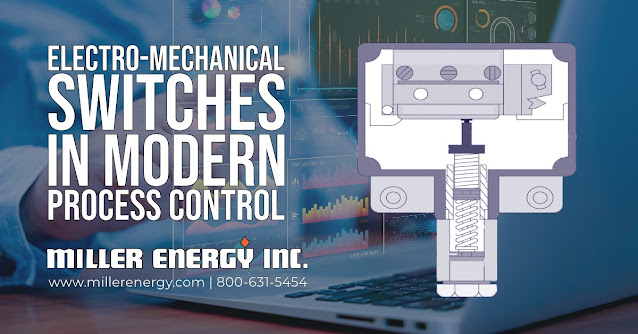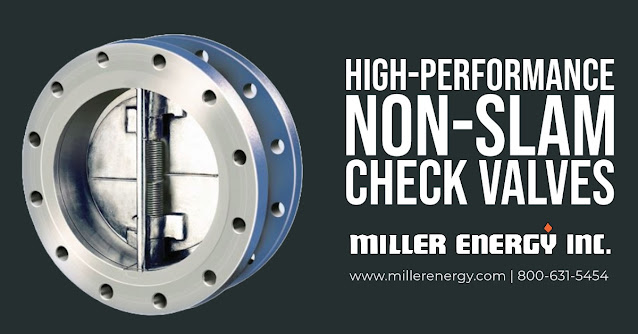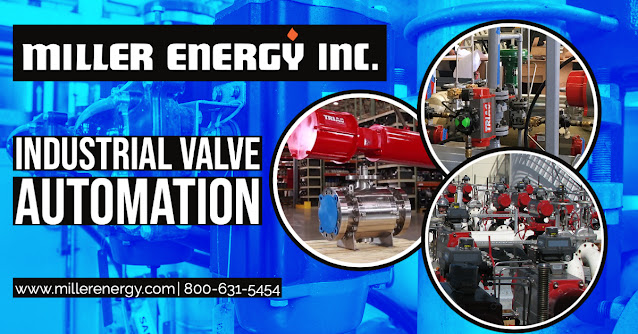9 Reasons Why Industrial Control Valves Fail
1) Improper Sizing
To properly size an industrial control valve, take the following steps:
- Determine the process flow rate, pressure drop, and fluid properties.
- Select the type of control valve based on the process conditions and application requirements.
- Choose a valve with the correct Cv (flow coefficient) for the desired flow rate and pressure drop.
- Consider the operating temperature, pressure, and any special requirements (such as high-temperature, corrosive, or abrasive fluids).
- Check that the valve meets all applicable industry standards.
Always consult a control valve manufacturer or an engineer with
expertise in control valves for a more accurate and detailed evaluation.
2) Improper Installation
To ensure the proper installation of an industrial control valve, take the following steps:
- Verify that all valve components are correct and undamaged.
- Check that the piping and valve are correctly aligned and supported.
- Use the proper gaskets and seals to prevent leakage.
- Check the actuator mounting and connection to the valve body.
- Make sure the control wiring is correct and properly connected.
- Test the valve's operation and adjust as necessary.
- Flush the piping system to remove any debris before installation.
- Follow all relevant safety procedures and guidelines.
3) Material Incompatibility
Material compatibility refers to the ability of a material to resist chemical attack, degradation, and corrosion from the process fluid. Material compatibility in industrial control valve installation is crucial because it ensures the valve's long-term reliability and prevents premature failure.
Ensure proper material compatibility by following these steps:
- Identify the chemical composition of the process fluid and any potential impurities.
- Determine the operating temperature and pressure of the fluid.
- Select valve components made of materials compatible with the fluid and conditions.
- Consider the effect of any potential impurities on the valve components.
- Choose materials that have sufficient corrosion resistance to prevent degradation.
4) Erosion/Corrosion
Erosion and corrosion affect industrial control valves because they can lead to valve failure and reduce the valve's lifespan. Erosion occurs when fluid velocity in the valve causes physical wear on the valve components. Corrosion is the chemical degradation of the valve material due to exposure to harsh chemicals or corrosive environments.
Mitigate erosion and corrosion with the following measures:
- Using corrosion-resistant materials such as stainless steel, Hastelloy, or titanium.
- Applying protective coatings like nickel plating, hard-chroming, or ceramic coatings.
- Regular inspection and maintenance to detect signs of wear and corrosion and replace parts before failure occurs.
- Using proper fluid handling practices, such as filtration, to remove abrasive particles from the process media.
- Installing isolation devices like piping spools, strainers, or blow-off valves to protect the valve.
These measures help ensure reliable operation and extend the life of industrial control valves.
5) Overloading
Overloading refers to a situation in which an industrial control valve is subjected to a load or stresses greater than its design capacity, causing damage or failure. Overloading occurs due to various factors, including improper sizing, incorrect application, or changes in operating conditions.
Prevent overloading with the following measures:
- Proper sizing of the valve based on the operating conditions and fluid characteristics.
- Use a suitable type of valve for the specific application, such as a high-pressure control valve for high-pressure systems.
- Regularly monitor operating conditions and fluid characteristics to detect changes and adjust the valve settings accordingly.
- Maintain the valve according to the manufacturer's instructions and replace worn or damaged parts.
- Use a safety relief valve or bypass system to relieve excess pressure and protect the control valve.
By following these measures, industrial control valves can be protected from overloading and failure, ensuring reliable operation and system safety.
6) Excessive Wear
Excessive wear on industrial control valves can significantly impact their performance. The following are some ways excessive wear can affect the performance of control valves:
- Reduced accuracy: Worn components can cause the valve to become misaligned or damaged, affecting its ability to control fluid flow accurately.
- Increased leakage: Worn seals, seats, or other components can cause increased fluid leakage, affecting the overall performance of the valve.
- Decreased flow control: Worn components can alter the flow characteristics of the valve, causing it to become less responsive or to control flow inaccurately.
- Increased pressure drop: Excessive wear can cause an increase in the pressure drop across the valve, reducing system efficiency and increasing energy costs.
- Increased maintenance requirements: Wear and damage to the valve components can result in increased maintenance needs, adding to operational costs and reducing reliability.
Prevent excessive wear of the control valves by regularly inspecting, maintaining, and replacing them as needed to ensure optimal performance and reliability.
7) Improper Maintenance
Improper maintenance of industrial control valves can have a significant impact on their performance, including:
- Reduced accuracy: Neglecting to perform regular calibrations or making incorrect adjustments to the valve can lead to reduced accuracy in flow control.
- Increased leakage: Failure to replace worn or damaged seals and gaskets can result in increased fluid leakage, affecting the valve's overall performance.
- Decreased flow control: Improper cleaning or repairs can alter the flow characteristics of the valve, reducing its ability to control flow accurately.
- Increased pressure drop: Neglecting to clean or replace dirty or clogged components can increase pressure drop across the valve, reducing system efficiency and inflating energy costs.
- Increased downtime: Improper maintenance can lead to valve failure, resulting in increased downtime and decreased productivity.
It is essential to follow the manufacturer's instructions and perform regular, scheduled maintenance to ensure optimal performance and reliability of industrial control valves.
8) Process Contamination
Process contamination in industrial control valves can harm operation by clogging or eroding internal parts, causing valve malfunction or failure. It can also lead to decreased process efficiency and increased maintenance costs. Prevent process contamination by implementing the following steps:
- Proper material selection: Using appropriate materials that are resistant to the specific process fluid and contaminants is vital.
- Regular maintenance: Regular cleaning and replacement of internal components can help prevent a build-up of contaminants.
- Installing filtration systems: Installing filters upstream from control valves can help remove contaminants before they reach the valve.
- Installing protection devices: Installing protective devices, such as strainers or deflectors, can help prevent larger particles from entering the valve and causing harm.
- Implementing best practices: Following best practices, such as avoiding sudden changes in flow rate, can help prevent process contamination and prolong valve life.
9) Aging or Fatigue Failure of Valve Components
Aging or fatigue failure of valve components can have a significant impact on industrial control valves, leading to the following issues:
- Reduced efficiency: Worn-out or degraded components can cause control valves to operate less efficiently, leading to increased energy costs and decreased production.
- Increased downtime: Aging or fatigued components can result in more frequent breakdowns, causing increased downtime and maintenance costs.
- Decreased reliability: Over time, components can weaken and fail, reducing the reliability of control valves and increasing the risk of failure.
- Leakage: Aging or fatigued components can result in leaks, causing loss of process fluid and potentially causing harm to the environment.
- Decreased safety: Worn-out or degraded components can increase the risk of valve failure, which can have profound safety implications in some industrial processes.
It is essential to regularly inspect and maintain control valves to detect and replace aging or fatigued components to prevent these types of failures and maintain efficient, reliable, and safe operation.
Miller Energy, Inc.
800-631-5454
https://millerenergy.com






